Does a Cosmic Cold Spot Challenge Creation?
My wife is very sensitive to cold spots in our home. So is our cat. Both can sense tiny temperature differences among the rooms in our home and determine which room is the coldest. Based on that sensitivity, they will do everything they can to avoid spending time in our home’s cold spot.
Cosmic Cold Spot
Many astronomers believe that the universe has an anomalous cold spot. The highest quality maps of the radiation left over from the cosmic creation event—known as the cosmic microwave background radiation (CMBR)—reveal a small region, about 5° across, that is 0.000070 Kelvin colder than the average temperature of the CMBR (see figure 1). The remainder of the CMBR map manifests average temperature variations of just 0.000018 Kelvin.
This cosmic cold spot, though small, is about five times larger than other CMBR temperature fluctuations. It also departs from the mean CMBR temperature by nearly four times as much as the average of other cold spots. This explains why most astronomers believe this particular cold spot is a true anomaly in the CMBR rather than just a statistical fluke.1 The possible validity of this cosmic cold spot has caused some astronomers to call into question certain aspects of the ΛCDM (lambda cold dark matter) big bang creation model, which is most consistent with the Bible’s creation account.2
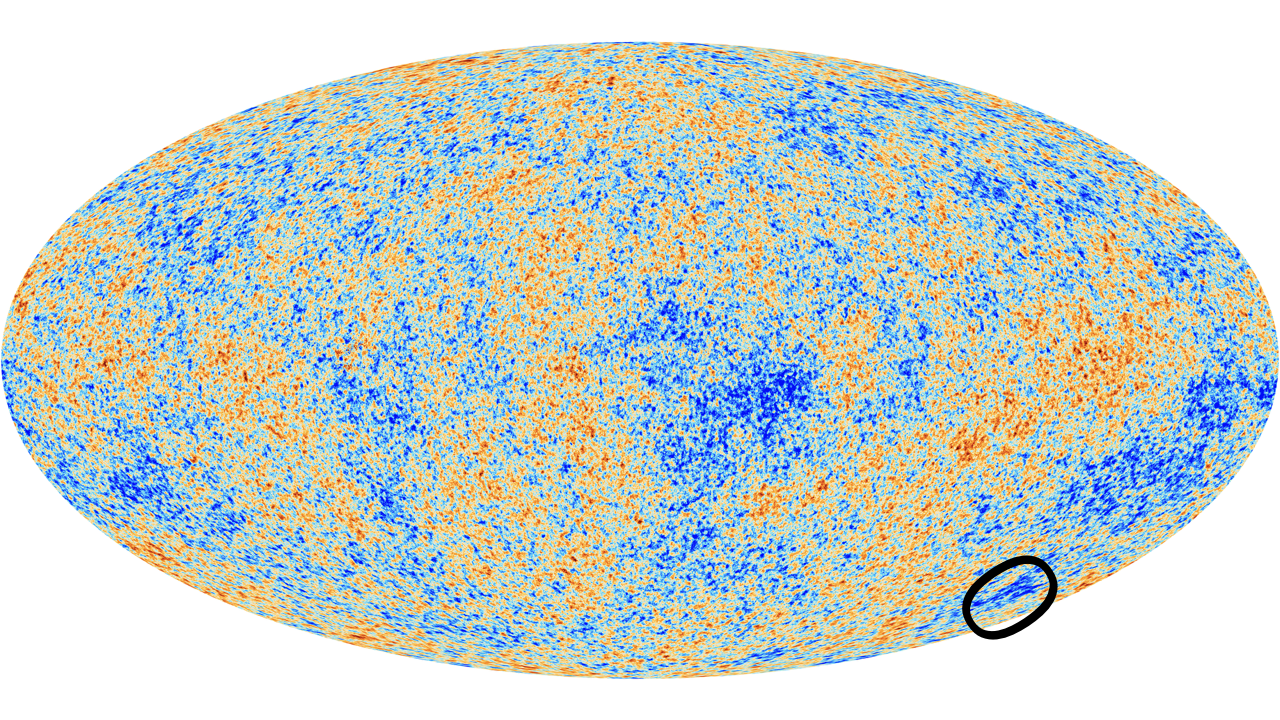
Explanations for the Cosmic Cold Spot
On the assumption that the cosmic cold spot is not just a statistical fluke, astronomers have, over the past seven years, probed for possible physical causes. The cause that has received the most intense observational and theoretical study is that of one or more underdense regions that align with the cosmic cold spot.
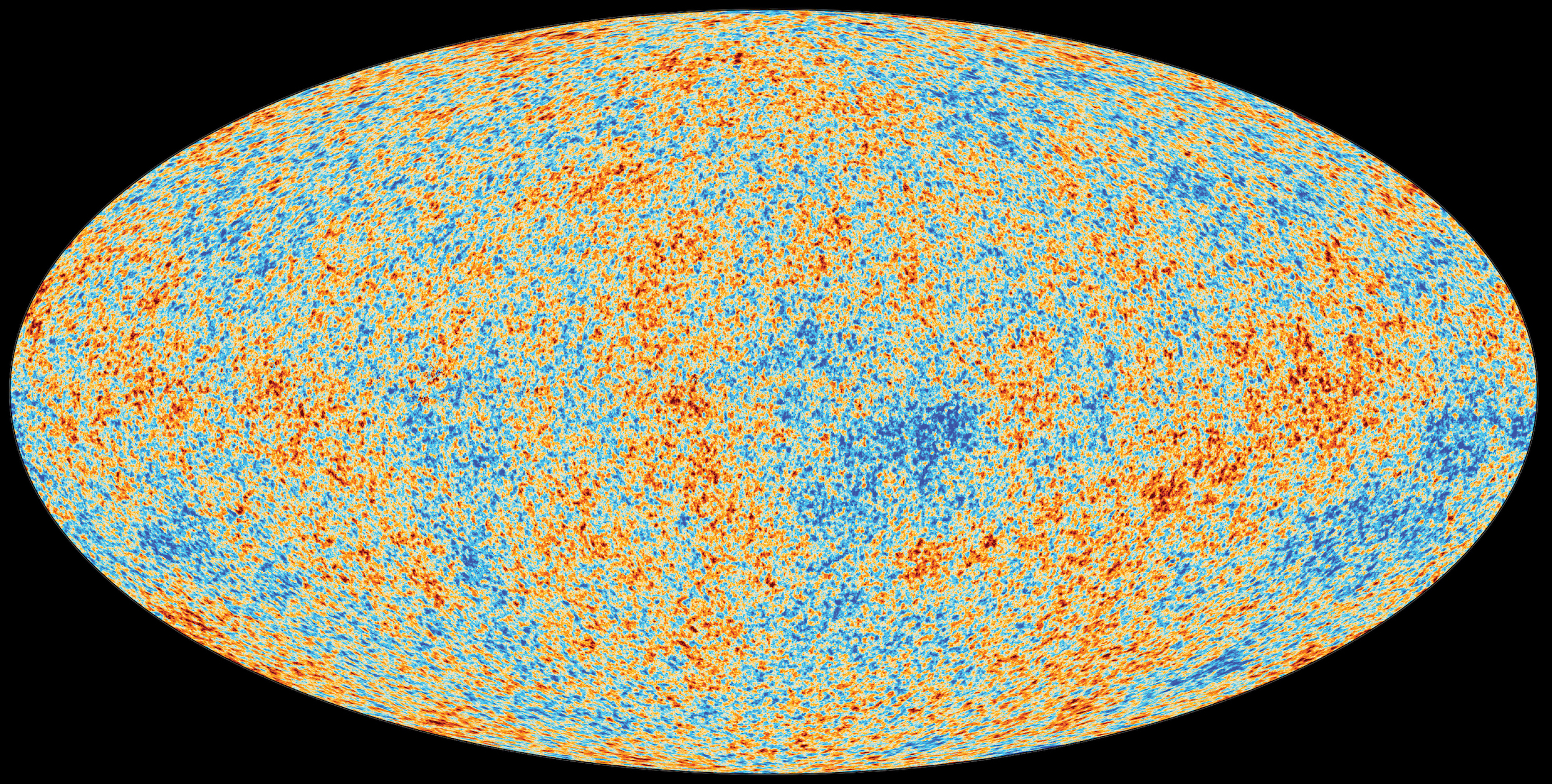
Astronomers refer to underdense regions in the universe as cosmic voids. I discussed cosmic voids as significant features in the cosmic webs in my March 9, 2020 blog.3 Cosmic voids are bubbles in the universe measuring from 30–400 million light-years across. They contain less than a tenth the density of matter that is typical for the rest of the universe. Supervoids measure from 400 million to more than a billion light-years across.
In 2017, a team of six astronomers led by University of Lyon’s Hélène Courtois used the Cosmicflows-3 catalog of peculiar velocities of galaxies to produce a three-dimensional map showing the gravitational velocity fields of the local universe.4
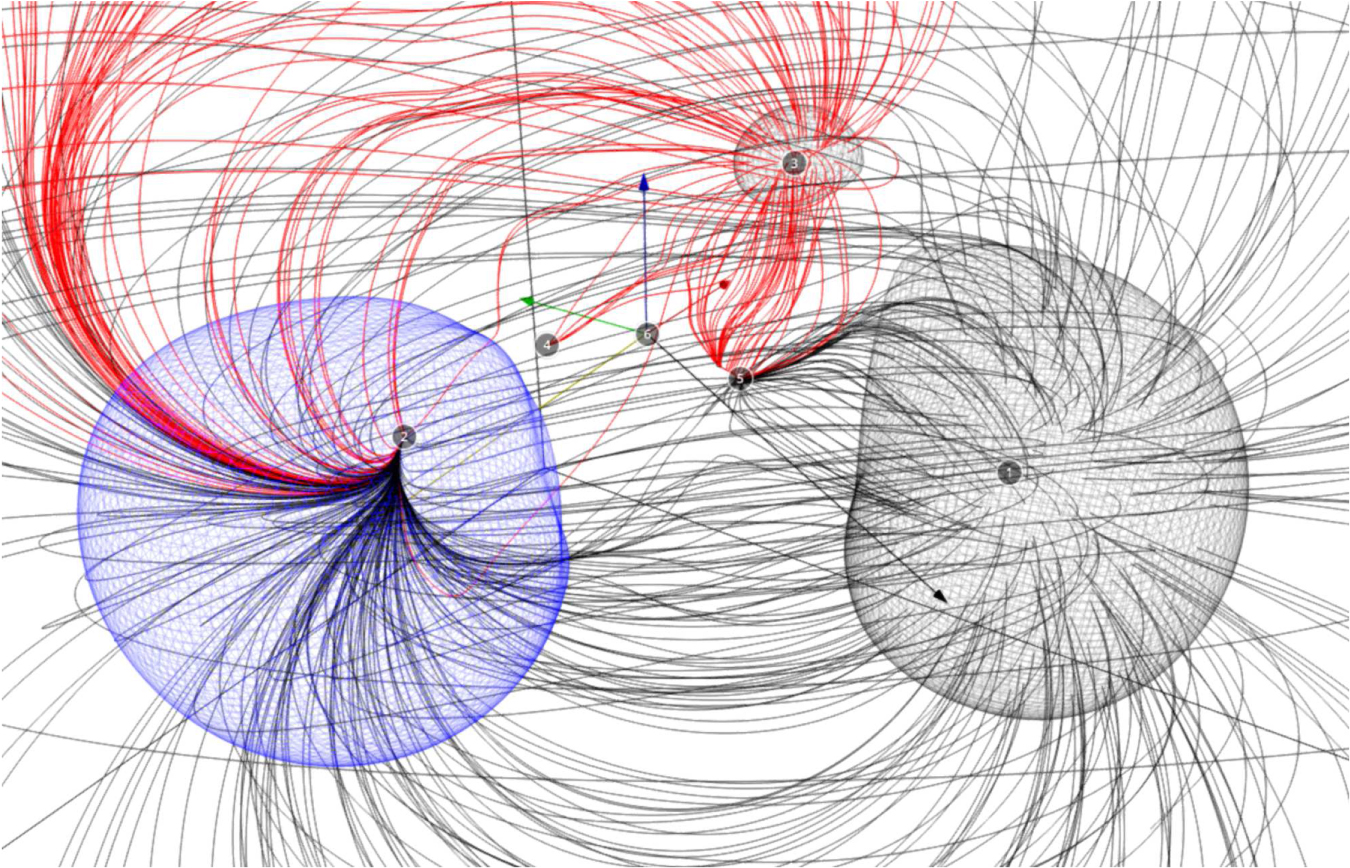
In figure 3, the nexus of three orthogonal lines toward the upper center shows the location of our Milky Way Galaxy. The blue region toward the left shows the location of the Shapley Supercluster of galaxies, the largest and most dense concentration of galaxies in the local universe. The gray regions to the right and upper center show the two most significant voids in the local universe.
Our galaxy lies on a line joining the Shapley Supercluster to the void in the upper center of figure 3. The high mass concentration in the Shapley Supercluster gravitationally pulls our galaxy toward it. The low mass concentration in the upper center void gravitationally repels our galaxy away from it. The combination of the pulling and the repelling explains the dipole feature in the CMBR (see figure 4).
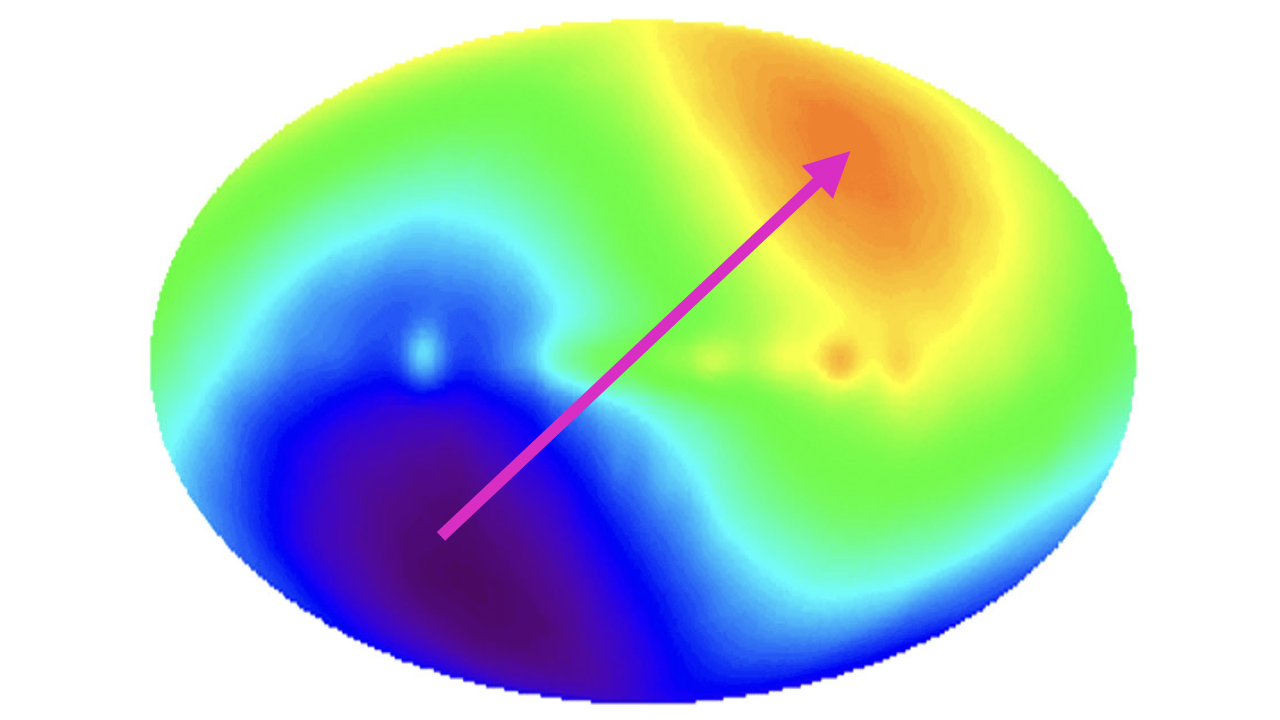
The huge void to the right in figure 3 aligns with the cosmic cold spot in figure 1. Hence, Courtois’ team concluded that it likely plays a substantial role in explaining the cosmic cold spot. They labeled this void the Cold-Spot Repeller.5
Voids and supervoids produce cold spots in the CMBR through an effect first proposed in 1967 by Rainer Sachs and Arthur Wolfe.6 In an expanding universe, CMBR photons (electromagnetic radiation particles) lose more energy when entering a void than they do when leaving the now larger void. This energy loss chills the photons.
In 2015, astronomers led by István Szapudi discovered the supervoid with a diameter measuring 1 billion light-years, which aligns with the cosmic cold spot.7 The Cold-Spot Repeller appears to be consistent with this supervoid. Szapudi’s team calculated that the integrated Sachs-Wolfe effect of this supervoid would cool the cosmic cold spot region by 0.000020 Kelvin.8 It could cool it by another 0.000020–0.000030 Kelvin if the supervoid they discovered were to prove to be slightly larger than their measurements indicated.9
In 2017, astronomers led by Ruari Mackenzie used the 2dF-VST ATLAS Cold Spot Redshift Survey and found, in the direction of the cosmic cold spot, three voids out to a distance of three billion light-years and a possible fourth void beyond that.10 They determined that the four voids combined would yield an integrated Sachs-Wolfe cooling effect no greater than 0.000031 Kelvin. Since this degree of cooling fell short of explaining the cosmic cold spot’s temperature, Mackenzie’s team suggested that a random quantum fluctuation in the universe’s primordial density distribution gave birth to the cosmic cold spot. However, there is only a 1 in 50 chance that such a fluctuation could explain the entirety of the cosmic cold spot’s colder temperature.
Yet another explanation for the cosmic cold spot was proposed just this year by astronomers led by Qi Guo.11 The team reported the discovery of 19 dwarf galaxies that are dominated by ordinary matter (matter comprised of protons, neutrons, and electrons) and deficient in dark matter (matter comprised of particles that interact with photons very weakly or not at all). Their discovery was unexpected since dwarf galaxies are known to be dominated by dark matter. Because 14 of the dwarf galaxies are isolated from larger galaxies, it is not possible that their dark matter was stripped away from them by the gravitational pull of an adjacent galaxy. The presence of a substantial number of dark-matter-deficient dwarf galaxies in voids and supervoids may enhance their integrated Sachs-Wolfe cooling.
The Planck 2018 updates in the CMBR temperature and polarization maps challenged the statistical significance of the cosmic cold spot. While the cosmic cold spot was clearly seen in the CMBR temperature map, it was barely visible in the CMBR polarization map (see figure 5).
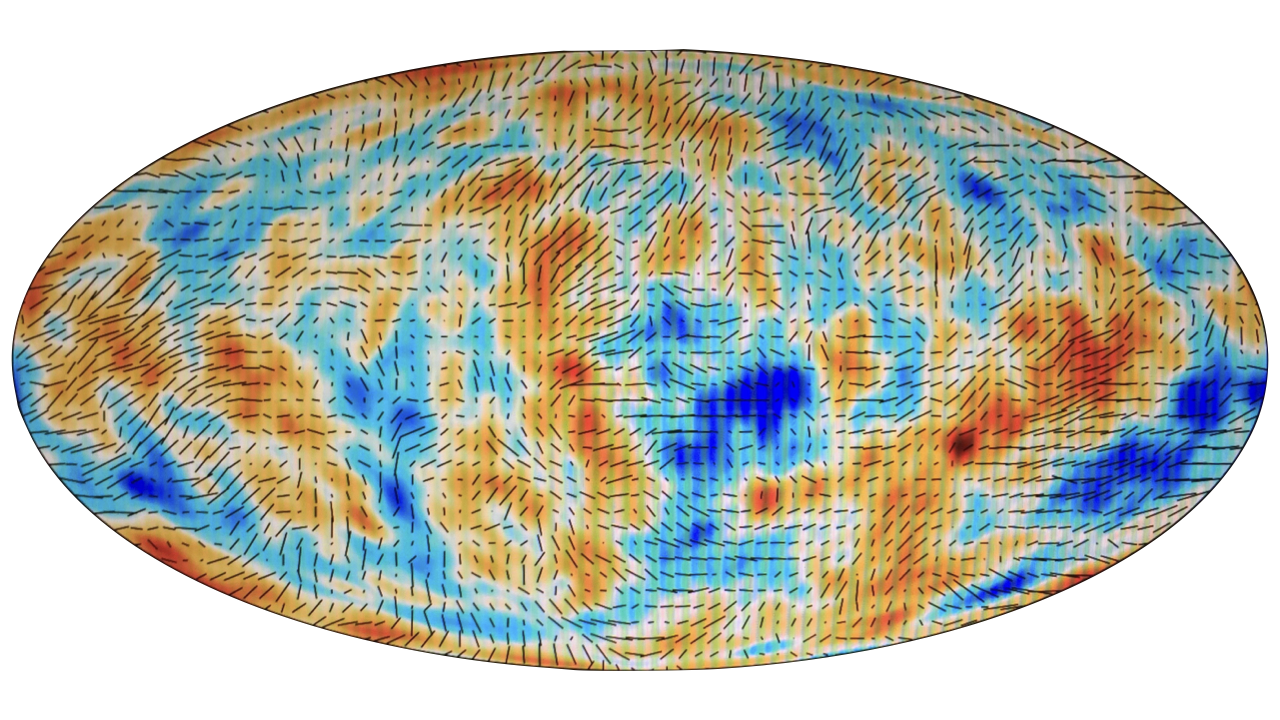
Cosmic Cold Spot Cause and Its Implications
Of the five possible explanations for the cosmic cold spot described above, not one appears sufficient on its own. It seems likely, however, that at least three must make a substantial contribution.
The integrated Sachs-Wolfe effect from one or more of the four or five voids in the direction of the cosmic cold spot likely explains at least a third of the observed cooling. Dark-matter-deficient dwarf galaxies could explain up to another third. A random quantum fluctuation in the universe’s primordial density distribution could explain some, if not most, of the cooling. The originally proposed explanation that the observed cooling is not real but is actually a statistical artifact could explain some of it; but it is unlikely to explain all the apparently observed cooling. That such a statistical artifact likely explains some of the apparent cooling appears borne out in the Planck 2018 CMBR polarization map.
The bottom line is that the seven-year search for explanations for the observed cosmic cold spot in no way calls into question the validity of the ΛCDM cosmic creation model. Astronomers’ latest observations sustain what the Bible taught about the origin, attributes, and history of the universe thousands of years ago.
Endnotes
- F. Finelli et al., “Supervoids in the WISE–2MASS Catalogue Imprinting Cold Spots in the Cosmic Microwave Background,” Monthly Notices of the Royal Astronomical Society 455, no. 2 (January 11, 2016): 1247, doi:10.1093/mnras/stv2388.
- Hugh Ross and John Rea, “Big Bang—the Bible Taught It First!” Facts for Faith, Quarter 3 (July 1, 2000): 26–32, https://www.reasons.org/explore/publications/facts-for-faith/read/facts-for-faith/2000/07/01/big-bang-the-bible-taught-it-first!
- Hugh Ross, “The End of Cosmic Greatness and the Beginning of Life,” Today’s New Reason to Believe (blog), March 9, 2020, https://www.reasons.org/todays-new-reason-to-believe/read/todays-new-reason-to-believe/2020/03/09/the-end-of-cosmic-greatness-and-the-beginning-of-life.
- Hélène M. Courtois et al., “Cosmicflows-3: Cold Spot Repeller?” Astrophysical Journal Letters 847 (September 20, 2017): id. L6, doi:10.3847/2041-8213/aa88b2.
- Courtois et al., 2.
- R. K. Sachs and A. M. Wolfe, “Perturbations of a Cosmological Model and Angular Variations of the Microwave Background,” Astrophysical Journal 147 (January 1967): 73–90, doi:10.1086/148982.
- István Szapudi et al., “Detection of a Supervoid Aligned with the Cold Spot of the Cosmic Microwave Background,” Monthly Notices of the Royal Astronomical Society 450, no. 1 (June 2015): 288–94, doi:10.1093/mnras/stv488.
- Szapudi et al., 293.
- Szapudi et al., 293.
- Ruari Mackenzie et al., “Evidence Against a Supervoid Causing the CMB Cold Spot,” Monthly Notices of the Royal Astronomical Society 470, no. 2 (September 2017): 2328–38, doi:10.1093/mnras/stx931.
- Qi Guo et al., “Further Evidence for a Population of Dark-Matter-Deficient Dwarf Galaxies,” Nature Astronomy 4 (March 2020): 246–51, doi:10.1038/s41550-019-0930-9.





